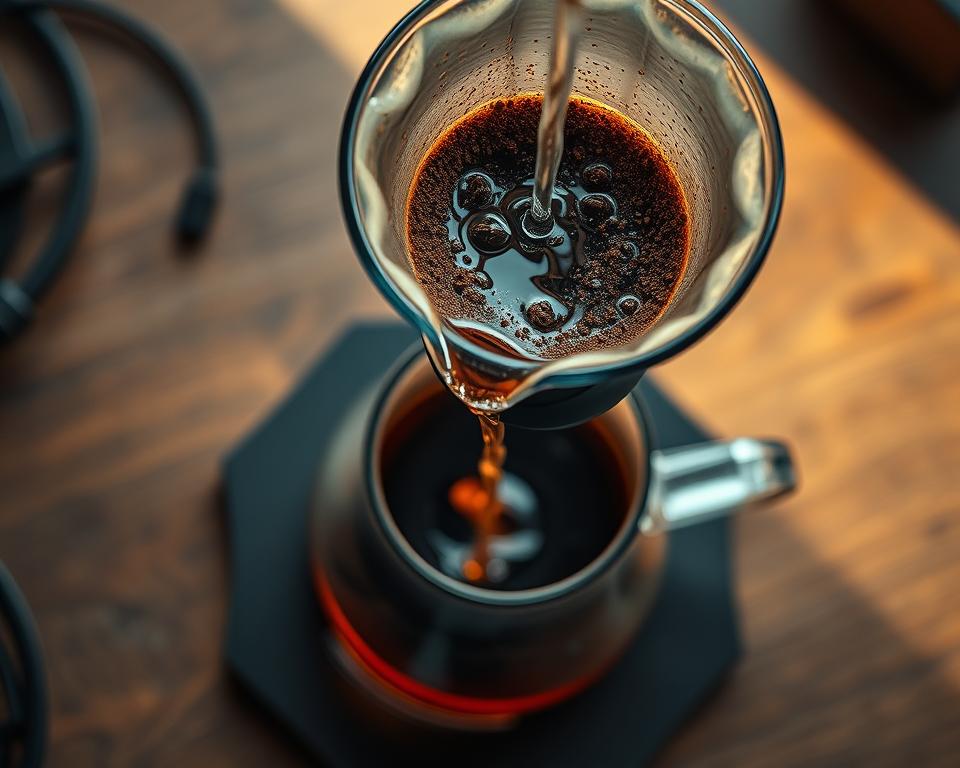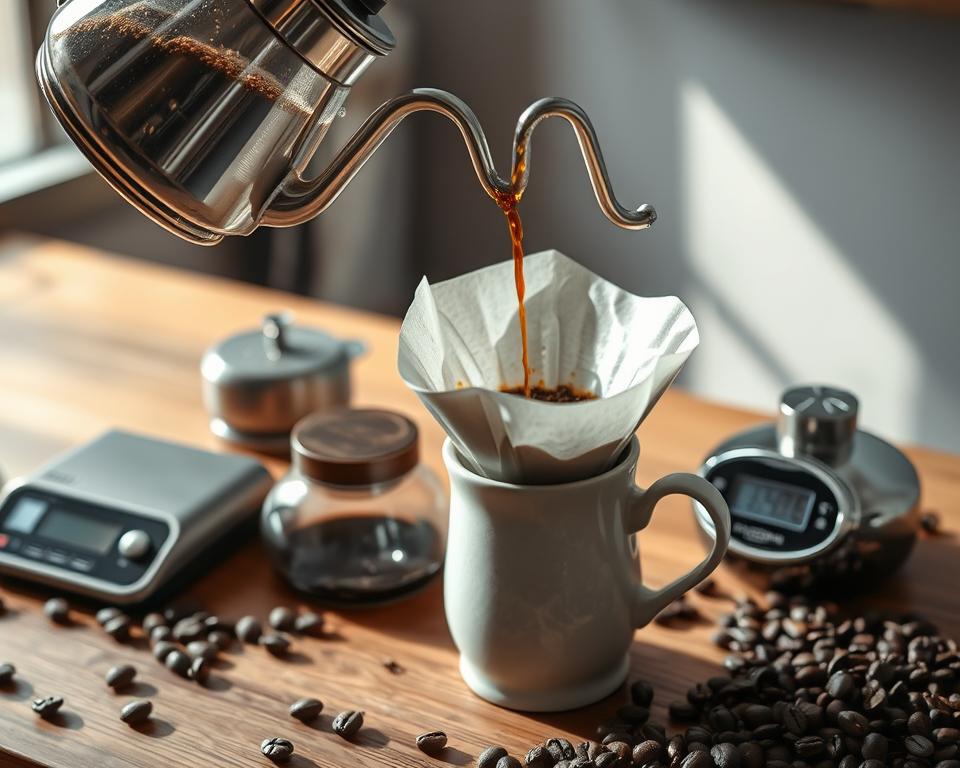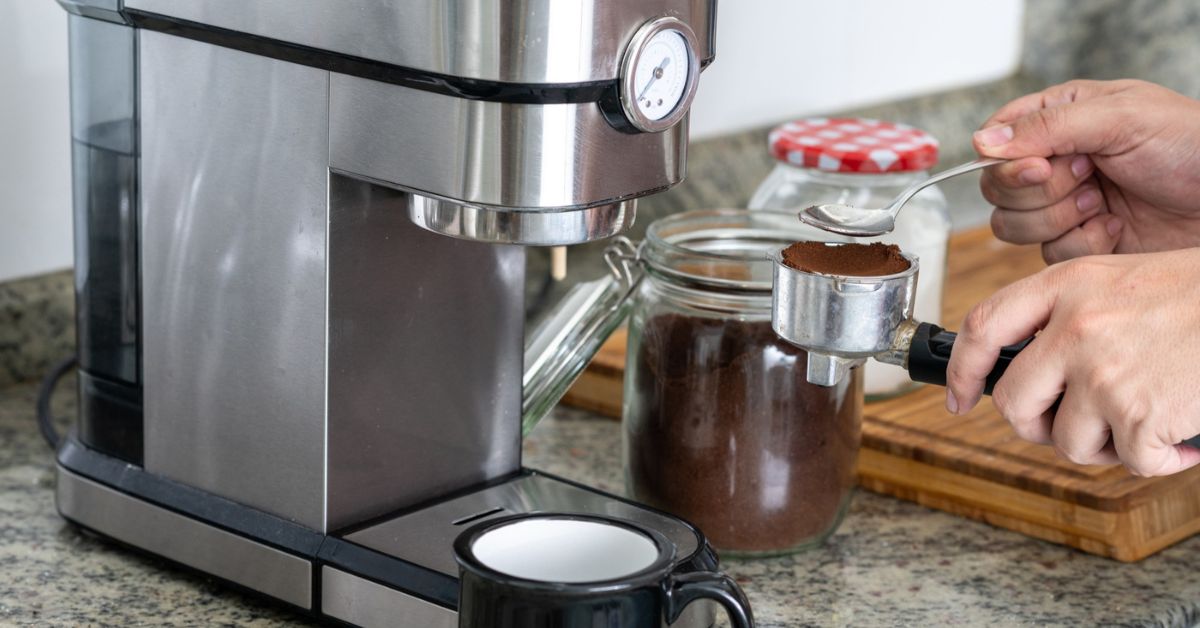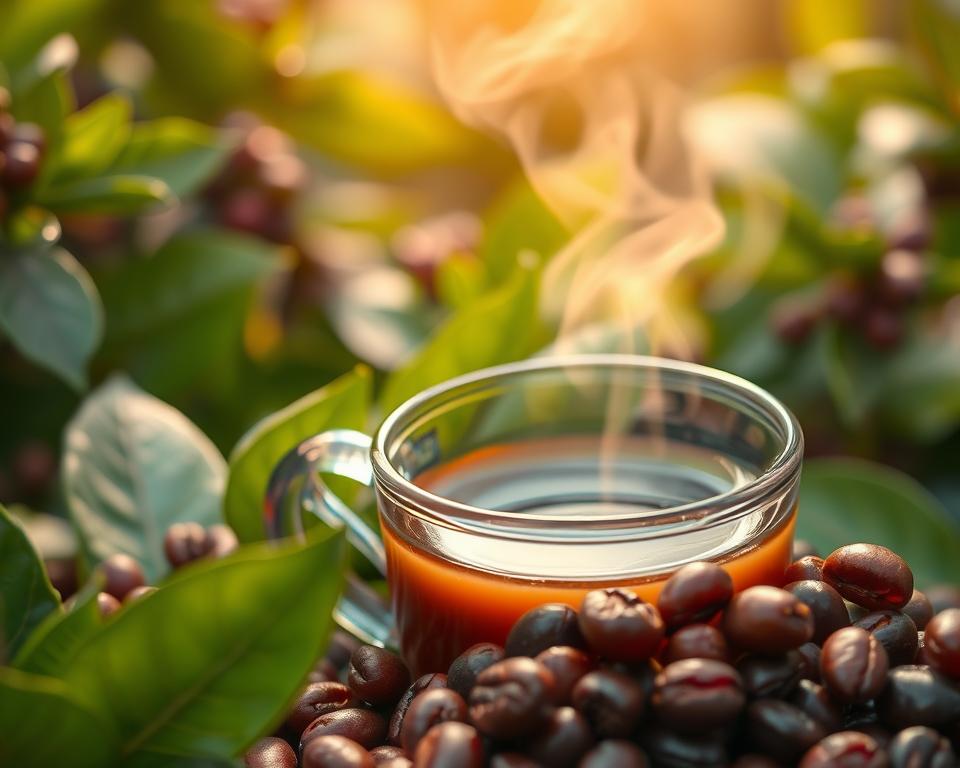Pour over brewing is a hands-on way to make coffee that involves careful attention to several details. Controlling the speed of your pour is key to making a great cup of coffee. By managing how fast you pour the water, you greatly influence the coffee’s extraction and taste. Equipment like a gooseneck kettle and a scale are crucial for keeping your pour speed steady, ensuring your coffee tastes just right. It’s important to bloom the coffee grounds for about 30-45 seconds. Also, pour water at a speed of 4-6 ml/s from 10-15 cm above the grounds. These steps are vital for mastering pour over brewing.
Finding the right balance of flavor and consistency is what pour over brewing is all about. This can be improved by trying out various filters and water types. By focusing on pour speed and making adjustments to the grind size and brew ratio, anyone can improve their coffee brewing skills to suit their taste. For more tips, have a look at this detailed article on how different coffee processing methods affect flavor.
Understanding the Importance of Speed Control in Pour Over Brewing
Controlling pour over speed is key to perfect coffee. How fast you pour affects the coffee’s flavor greatly. It’s all about hitting that sweet spot for the best brew.

Why Speed Matters
Pouring speed affects coffee ground saturation during bloom. Pour too fast, and you risk uneven extraction. This can make your coffee taste weaker or less flavorful.
Pour too slow, and you might over-extract, making your coffee bitter. It’s all about finding the right balance for that perfect cup.
Impact on Flavor and Extraction
The speed of your pour influences brewing time directly. A steady, controlled pour means water and grounds mix well. This ensures your coffee is smooth and balanced.
Proper speed avoids problems like channeling and clogging. These issues can spoil your coffee’s flavor. By adjusting your pouring rate, you can improve the coffee’s body and taste. This makes each cup enjoyable.
Essential Equipment for Managing Pour Over Brewing Speed
Getting the pour over brewing speed right needs the correct tools. Special gear makes sure we control every part of making coffee. This brings out great results in each cup. Here are the key pieces you need to get this mastery.
Gooseneck Kettle
A gooseneck kettle is key for controlling pour speed and direction. Its long, narrow spout allows for a steady flow. This is important for a good extraction. Hario and Fellow are brands that offer top-notch gooseneck kettles. They are built for pour over brewing, making sure water hits the coffee just right.

Thermometer and Coffee Scale
It’s also crucial to have a thermometer for brewing. The right water temperature changes coffee flavor and extraction. Stick to 195 to 205 degrees Fahrenheit for the best taste. Keeping track of temperature helps you get the most from your coffee every time you brew.
Moreover, a digital coffee scale is a must-have for measuring coffee and water accurately. It keeps the coffee-to-water ratio perfect, usually 1 gram of coffee to every 17 grams of water. Scales like the Acaia Pearl also track data in real-time. This lets you adjust as you go.
To nail the pour over technique, you’ll want a gooseneck kettle, a thermometer, and a digital scale. These tools help control the speed of your pour. They make sure every step is exact, enhancing the flavor of your coffee.
Mastering the Pouring Technique
The pouring technique is key in pour-over brewing. It affects the coffee’s final taste and strength. Knowing each step brings consistency and precision to every cup.
The Initial Bloom
The coffee bloom technique starts the brewing process. Hot water interacts with the coffee grounds, releasing CO2. This prepares the grounds for full extraction. The bloom should last 30-45 seconds, using twice the coffee’s water weight. This step is vital for balanced extraction.
The Art of the Circular Pour
After blooming, practice the circular pour. This technique involves pouring water in a controlled, circular motion. Start from the middle and move outwards. The goal is even extraction.
The pour height should be 10-15 cm with a flow of 4-6 ml/s. This helps develop a fuller flavor.
Consistency and Flow Rate
Keeping a steady pour rate is important for uniform brews. Adjust grind size or water temperature to fix flow rate issues. Aim for consistent strength and flavor in each brew. This focus ensures every cup meets your expectations.
Adjusting Brew Parameters for Optimal Results
To make the perfect pour over coffee, adjusting key brew parameters is a must. Think about the brew temperature, coffee grind size, and the coffee water ratio for the best taste. These steps make sure your coffee tastes just right and fits your flavor likes.
Water Temperature
The ideal water temperature for pour over coffee is between 96-98 degrees Celsius. This temperature range helps extract the coffee’s unique flavors well. Small changes in temperature can alter the taste a lot, so the goal is a coffee that’s not too bitter or too sour.
Grind Size and Distribution
Getting the grind size right is key for pour over coffee. The right size for a V60 is between 400-700 microns and looks like fine sea salt, which helps the coffee extract evenly. Other brewers like Chemex or Kalita Wave might need slight changes.
Grind size affects how fast your coffee brews, so start with a coarser grind and adjust. Clean your grinder often to keep your grind size consistent which is crucial for great tasting coffee.
Water-to-Coffee Ratio
It’s important to use the right water-to-coffee ratio for the best brew. The usual ratio is 1:16, but adjust it to 1:15 for stronger or 1:17 for lighter coffee. This ratio decides the brew’s strength and how well it’s extracted. Click here to learn more.
To tune the taste, start with 15-20 grams of coffee per cup and change as needed. Keeping the filter steady and pouring correctly helps keep the right ratio for a perfect cup.
Troubleshooting Common Issues in Pour Over Brewing Speed Control
It’s frustrating when pour over coffee doesn’t turn out right. It can mess up the taste and quality of your coffee. A major sign of brewing issues is how long brewing takes. If your coffee is too bitter or tastes weak, the problem might be the grind size. To fix this, make sure your grinder is working properly and grinding the coffee evenly.
The way you pour water matters too. Pour from 10-15 cm above with a steady flow rate for better brews. Making sure each batch brews for the same time will help make your coffee more consistent. Preheating your gear and keeping water between 195°F to 205°F is also key.
How you place the filter is important. Make sure it’s placed right so the coffee grounds get water evenly. Trying out different ways of pouring, like making 2-4 pours, can help control the brew better.
The type of water you use affects the taste. Adjusting your water to fit your area or to perfect the flavor is a game-changer. Also, measuring your coffee and water accurately is crucial. For the Hario V60, a 1:16 coffee-to-water ratio is a good rule.
To get the best pour-over, being consistent is vital. Tackling these common issues and tweaking your method can help you nail pour-over brewing. Then, you can enjoy great coffee every single time.
Can the Right Electric Pour-Over Kettle Help Achieve Better Speed Control in Brewing?
Using toprated electric kettles for coffee brewing can significantly enhance your brewing precision. These kettles often feature temperature control and adjustable flow rates, allowing you to manage speed and pour consistency. This control ultimately leads to a more flavorful and balanced cup, making them essential tools for any coffee enthusiast.
Conclusion
Speed control is essential in making outstanding pour over coffee. Knowing how factors like water temperature and grind size affect your brew is crucial. Tools like the Hario V60 Dripper make it possible to perfect every part of your coffee.
Pour over brewing lets you control your coffee’s taste. You can adjust water temperature between 195-205°F and find the best grind size. This way, you get to enjoy the distinct flavors and smells of your coffee.
From starting the bloom to doing the circular pour, every step is important. If problems pop up, fixing them helps keep your coffee great. Being patient and open to trying new things makes your brewing better. It turns it into a special skill.
By following these tips, anyone can make an excellent cup of coffee. It shows that making great pour over coffee is both an art and a science.
FAQ
Why is speed control crucial in pour over brewing?
Speed control in pour over brewing is key because it affects the coffee’s strength and flavor clarity. It ensures the coffee grounds are fully soaked, avoiding dry spots and uneven taste.
How does speed control impact the flavor of my coffee?
The speed of pouring water over coffee grounds changes how flavors and oils are drawn out. It makes the coffee taste balanced and prevents problems like clogging.
What equipment do I need for precise pour over speed control?
For exact speed control, use a gooseneck kettle for smooth pouring. A thermometer checks the water’s temperature, between 195-205°F. A coffee scale measures coffee and water precisely.
What is the initial bloom, and why is it important?
The initial bloom is when hot water first meets coffee grounds. It lets gases escape and readies the coffee for extraction. The right blooming means using enough water and timing it right, for great flavor.
How should I control my pouring technique during the brew?
After blooming, pour in a slow circular motion from the middle to the outside. Keep the pour high between 10-15 cm. Try for a flow of 4-6 ml/s. This ensures even taste.
How do I adjust brew parameters to optimize my pour over coffee?
Change the water temperature, grind size, and coffee-to-water ratio to taste. Small coffee amount changes can also tweak the flavor. These adjustments help get the best taste.
What should I do if my brew time is off?
If brew time is wrong, you may need to change your grind size. Fine-tune your grinder for a balanced brew. Keep your equipment clean and pre-heated for best results.
Can different filters affect my pour over brewing?
Yes, filter types change water flow and extraction. Try different filters and keep your brewing surface even. This ensures uniform taste with every brew.
How can I improve my pour over brewing consistency?
To brew consistently, measure carefully and take care of your gear. Testing different pouring techniques matters. Correct filter use and warming up gear are key for reliable coffee.
What role does water play in pour over brewing?
Water quality changes the taste of pour over coffee. Try different water types to find the best flavor. Customizing water can improve your coffee experience.




